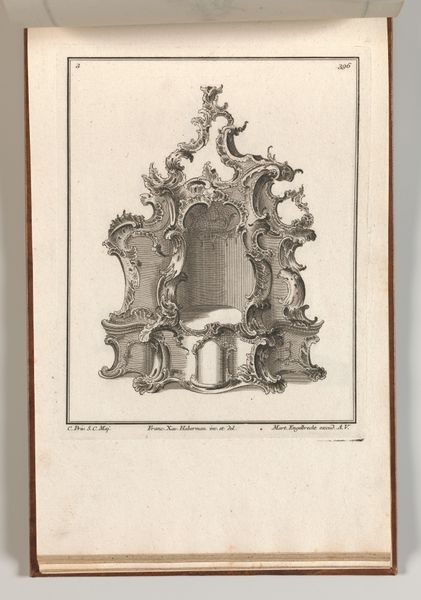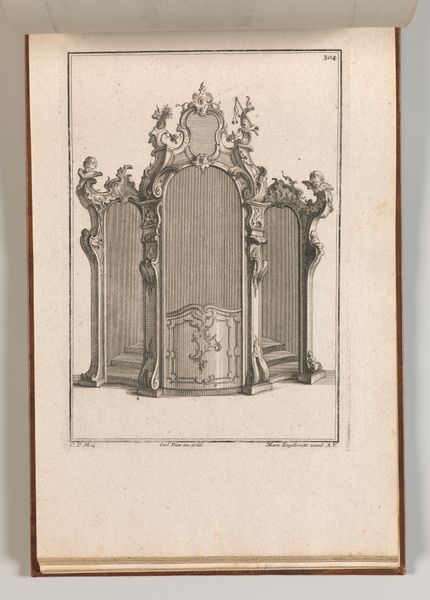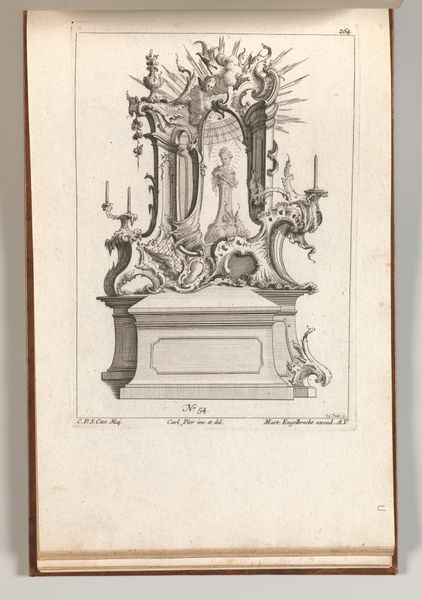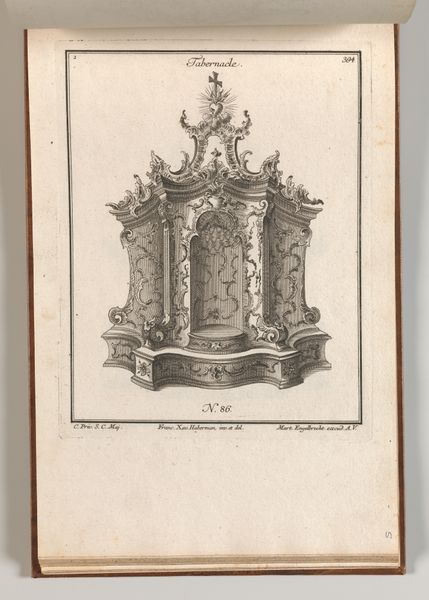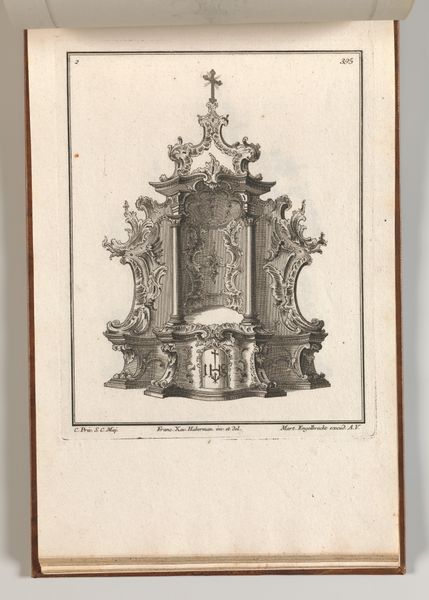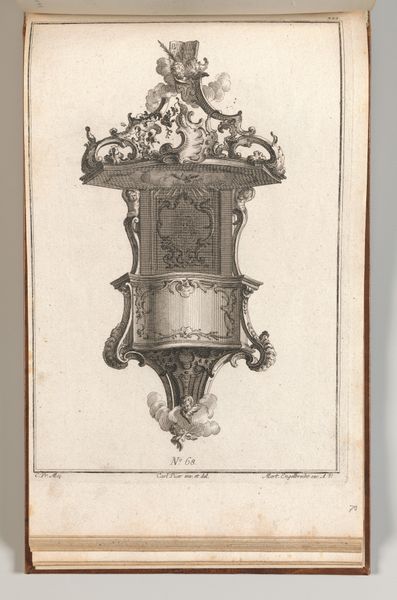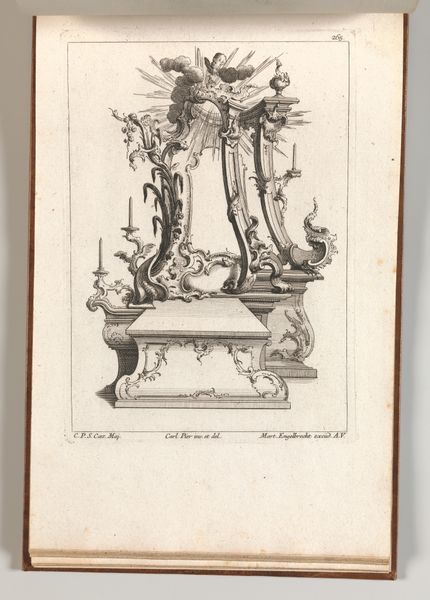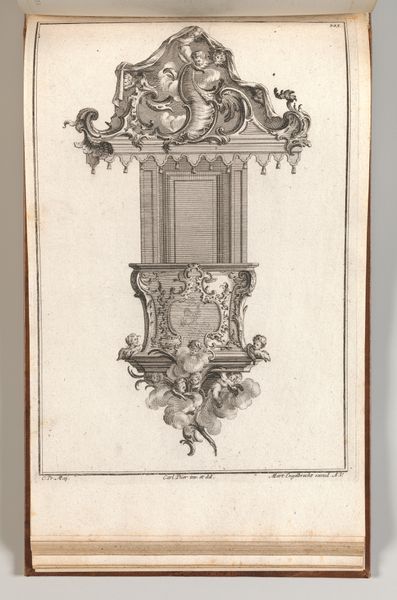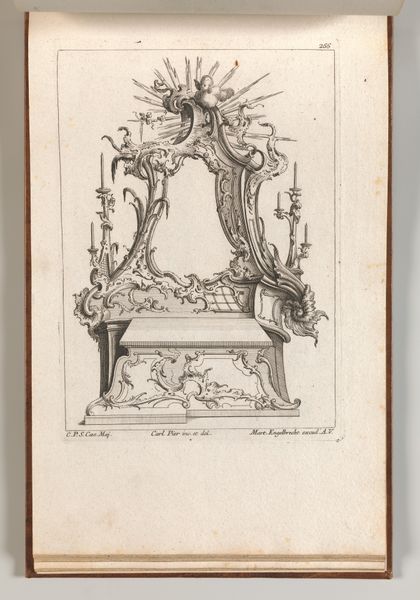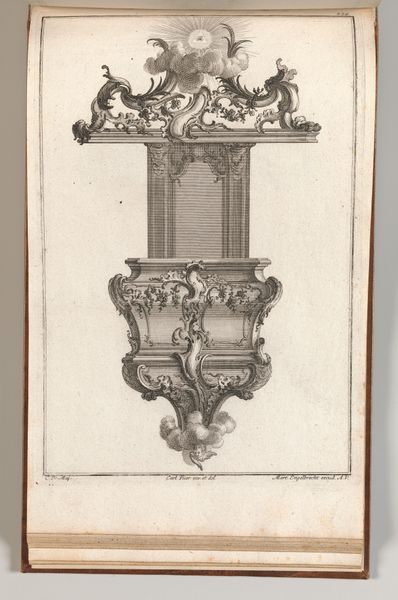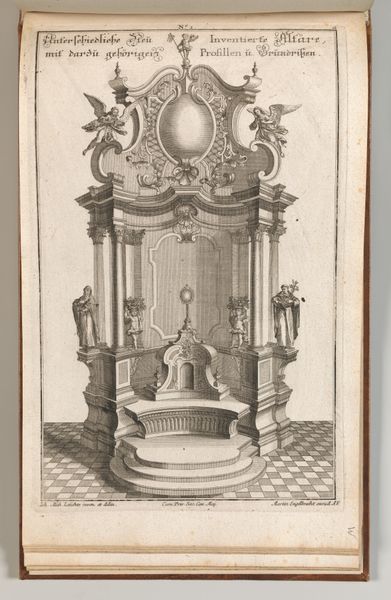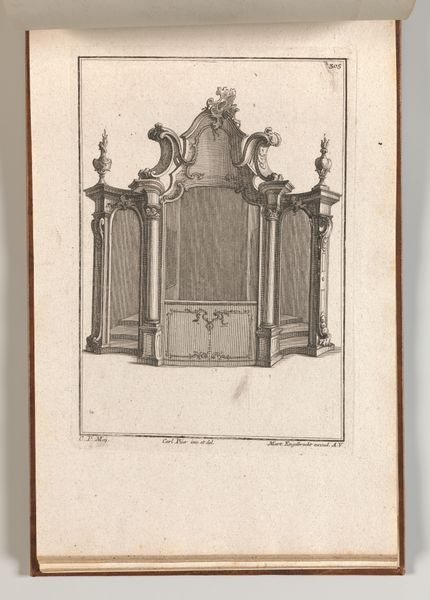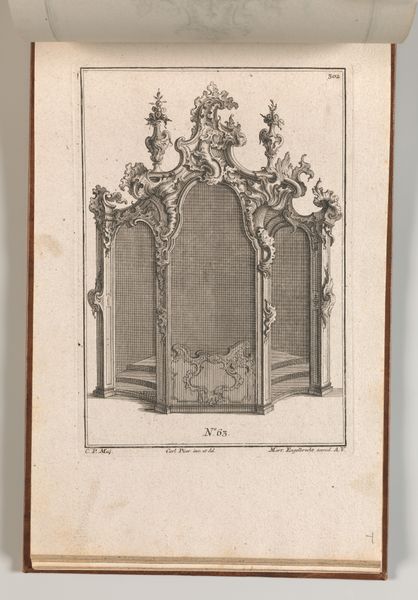
Design for a Confessional, Plate 2 from an Untitled Series of Designs for Confessionals 1750 - 1756
0:00
0:00
drawing, print, architecture
#
drawing
#
baroque
# print
#
italian-renaissance
#
architecture
Dimensions: Overall: 8 7/16 × 13 3/4 in. (21.5 × 35 cm)
Copyright: Public Domain
Curator: This detailed design for a confessional, etched sometime between 1750 and 1756, comes from an untitled series of designs by Carl Pier. It shows Plate 2, offering a fascinating glimpse into religious architecture of the period. Editor: It's like a little stage! Almost theatrical. All that fuss just to whisper secrets... Makes me think, what kind of guilt requires such an ornate booth? Curator: Well, let's consider the context. Pier's meticulous technique in rendering this piece. The work is a print, intended for broad distribution, not a one-off design. It reflects the era's understanding of religious life and confessional process as almost theatrical, performed under structures manufactured for that precise function. Editor: "Manufactured"—there’s that word. Suddenly those cherubs on top feel less angelic and more...mass-produced. I mean, confession is supposed to be personal, right? A humble, internal thing, and it seems all covered by labor. This piece, in that sense, brings to the surface issues about the Church's role as mediator in individual atonement. Curator: Exactly! Pier’s Baroque sensibility combines spiritual significance with visible wealth. It is important to realize these ornate confessionals existed within a complex social fabric where sin, absolution, and earthly power were intricately connected. How might the architecture affect confession, or vice versa? How much of religious ritual hinges on visible consumption, displayed devotion, architecture, labor? Editor: Maybe the guilt had more to do with earthly sins like greed, Carl Pier provides a way of seeing guilt as enmeshed with labor and the economic structure. Perhaps that's what all the gilded fuss is about! What can't be fixed is the human. Curator: Ultimately, this piece allows us to consider these social processes anew. Editor: Right, it isn’t just about piety and the Divine, there’s so much human labor implied in it! Thanks to the production, we see more broadly into faith in Early Modern society.
Comments
No comments
Be the first to comment and join the conversation on the ultimate creative platform.
